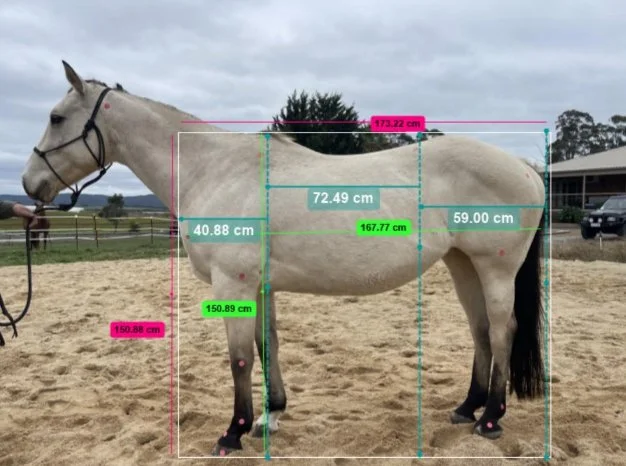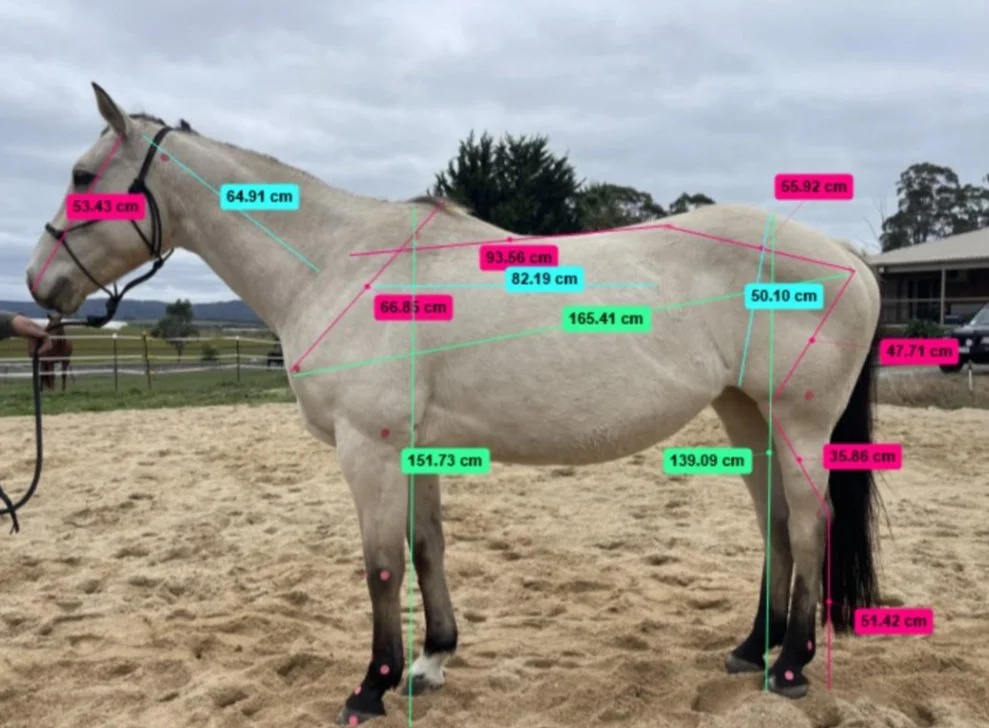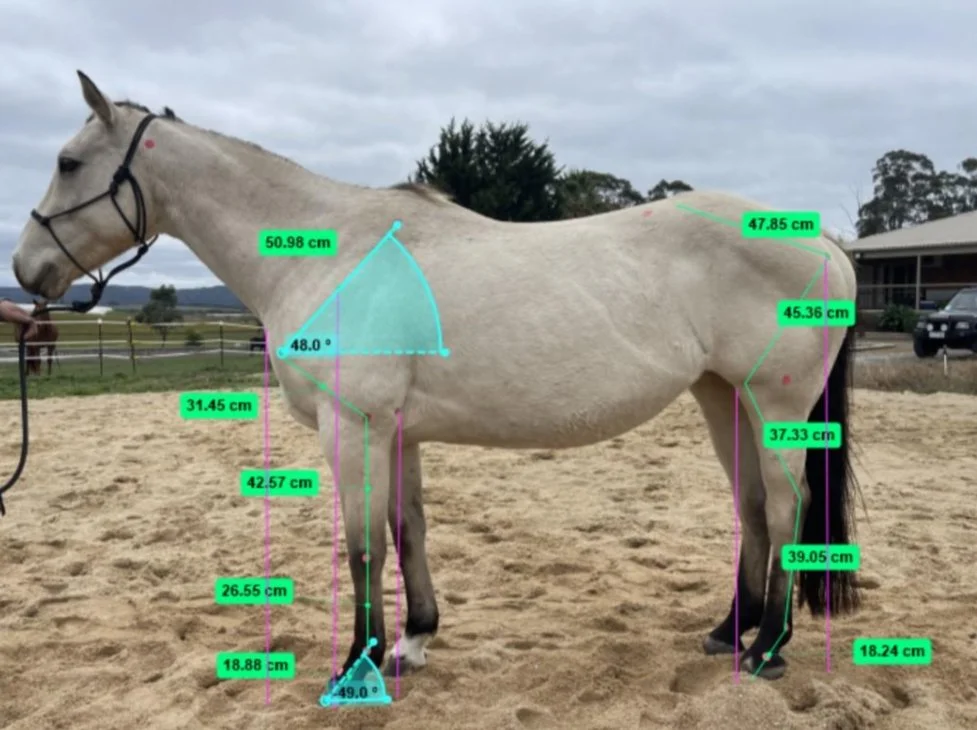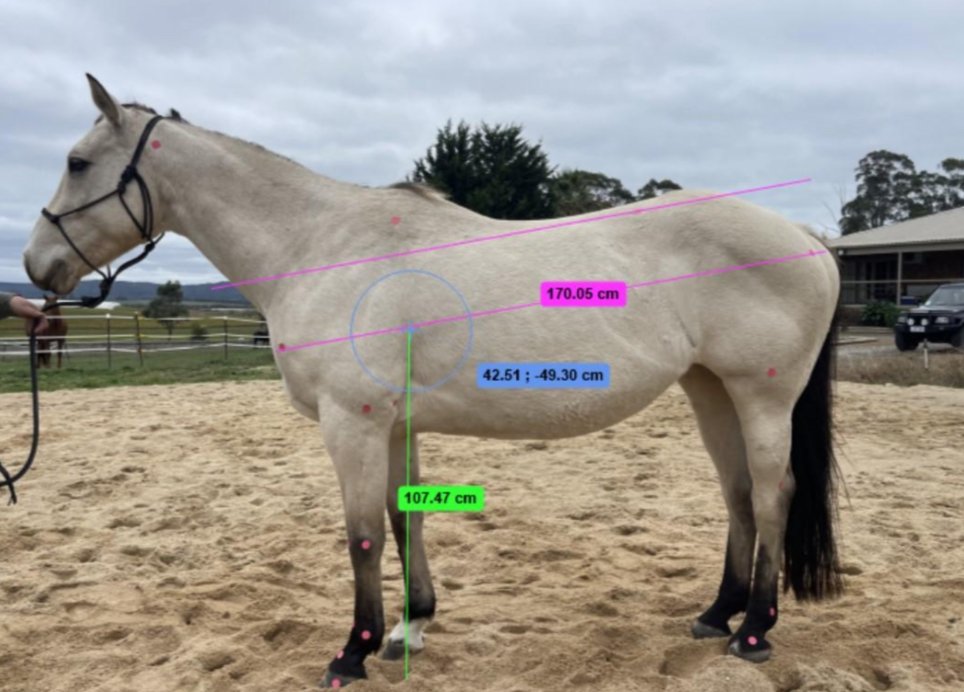Case Study: Navigating Sensitivity and Connection Through Gentle Myotherapy
It all begins with an idea.
An Ongoing Treatment Journey and Learning Curve
Horse: Sunshine
Breed: ACE Warmblood
This case study began with the intention of identifying and addressing biomechanical imbalances in Sunshine using deep tissue massage and targeted stretching. However, as with many horses, she reminded me that therapy is never one size fits all. Horses are deeply individual, and just when I think I can predict a treatment path, they challenge me to listen more carefully, approach more gently, and grow as a practitioner.
Sunshine presents with significant headshaking, triggered by external stimuli, including physical touch. What I expected to be a straightforward musculoskeletal treatment quickly evolved into a delicate process of patience, sensitivity, and adaptation. During the first four sessions, I struggled to connect with her and understand her needs as clearly as I usually do. One of the fundamental principles of equine bodywork is to work on the horse’s terms, to have our hands listen more than they speak. Yet, even with this in mind, it can take time to truly hear what a horse is asking for.
The breakthrough came when I shifted away from deep tissue techniques and embraced an approach of only the softest touch. That session marked a turning point. Sunshine relaxed, began to yawn, a clear sign of parasympathetic nervous system engagement and met me halfway. From there, our focus moved from correction to regulation, emphasizing gentle fascial release, nervous system support, and creating a consistent, safe space for her to decompress emotionally and physically.
Massage goes beyond simply working on muscles, it deeply affects the autonomic nervous system, which controls involuntary bodily functions like digestion and heart rate. Our training highlights that when massage is applied correctly, it can significantly slow down metabolic processes, which is why horses shouldn’t eat immediately before or during sessions to avoid digestive upset. Recognizing this whole body effect is essential. In Sunshine’s case, conventional targeted techniques were too intense given her heightened sensitivity. Instead, by focusing on calming her nervous system and fostering relaxation, we’ve established a gentler approach that supports her overall wellbeing, gradually enhancing both her mood and movement.
This case stands as a testament that even highly sensitive horses prone to headshaking can benefit from tailored myotherapy. With patience and adaptation, meaningful progress is possible.
Understanding Biomechanics: Conformation Insights and Movement Implications
To complement the therapeutic process, I conducted a full conformation analysis to better understand how her structure may influence or contribute to her current sensitivities, behaviour, and movement patterns. This provides a foundation for tracking how treatment may affect not only how she feels, but how she moves and performs long term.
Sunshine’s body divides into thirds: shoulder (40.88 cm), barrel (72.49 cm), and hindquarters (59.00 cm), with the barrel proportionally dominant and hindquarters slightly shorter. She stands 150.88 cm at the withers and measures 173.22 cm from shoulder to buttock, giving her a rectangular frame with a mild downhill slope, the croup sits slightly higher than the withers.
While Warmbloods are typically bred for uphill balance and collected power, Sunshine’s longer back, rectangular build, and downhill tendency suggest she may perform best in disciplines prioritizing reach, rhythm, and forward flow, such as lower level dressage, working equitation, or endurance flatwork, rather than those demanding tight frames or explosive power.
Proportional analysis reveals slightly shorter hind limbs, which may limit propulsion and uphill engagement. Additionally, her scapula to haunch length is less than ideal, potentially restricting stride extension and contributing to compensatory tension over time. Shoulder and pastern angles 48° and 49°, respectively are near ideal and support shock absorption, stride efficiency, and balanced limb loading.
Sunshine’s center of gravity lies slightly forward, consistent with her downhill build. This means more weight rests on her forehand, which can challenge collection but also
provides stability and forward drive, advantages in disciplines that demand consistent energy and longer frames.
Despite minor deviations such as a slightly long back and mild downhill balance, Sunshine meets key ACE Warmblood standards: muscular build, proportionate head and neck, solid limbs, and well aligned shoulder and pastern angles. Her conformation supports fluid, elastic movement, good stability, and soundness, especially for lower to mid-level performance and varied work.
General Overview
Conformation & Proportions
● The horse’s body divides into thirds: shoulder (40.88 cm), barrel (72.49 cm), hindquarters (59.00 cm).
● The barrel dominates proportionally, and the hindquarters are slightly shorter.
● Height (withers to ground): 150.88 cm | Length (shoulder to buttock): 173.22 cm → rectangular build.
● Slight downhill slope (croup higher than withers).
Implication:
While Warmbloods are typically bred for uphill balance and power in collected work, this mare’s longer back, rectangular frame, and slight downhill slope suggest she may excel more in disciplines requiring reach, rhythm, and forward flow (e.g., lower level dressage, working equitation, endurance type flatwork), rather than sports demanding extreme collection, tight frames, or explosive jump take off power.
Proportional Analysis
(Head-to-body measurements, limb ratios, body length)
● Head: 50.98 cm
● Hock to ground: 39.05 cm (slightly short)
● Scapula to haunch: 37.33 cm (shorter than ideal)
● Body length (2.5 × head = 127.45 cm) → Actual: 107.47 cm
Implication:
The slightly short hind limbs may reduce thrust and uphill lift in collected gaits. The shorter scapula haunch measurement could limit maximum stride extension, potentially creating compensatory tension over time. These factors may influence her preferred frame and way of going, making her more comfortable in long, ground covering work than in high collection exercises.
Shoulder & Pastern Angles
● Shoulder: 48° | Pastern: 49°(ideal ~45°)
● Indicates excellent shock absorption, stride efficiency, and balanced loading through the limbs.
Implication:
These angles support fluid, elastic movement and reduce concussion-related stress, a benefit for sustained arena work or varied surface riding typical in Warmblood disciplines.
Center of Gravity & Float Line
● Slightly downhill frame confirmed.
● Center of gravity lies forward of midpoint, consistent with Quarter Horse build.
● Downward float line from ilium to scapular spine.
Implication:
More weight on the forehand can make uphill collection more challenging, particularly in advanced dressage or jumping approaches. However, this build can provide stability and forward drive, useful in disciplines requiring constant forward energy or longer frames.
Breed Standard Comparison
Traits Met:
- Deep barrel and substantial bone
- Balanced shoulder and pastern alignment
- Proportionate head and neck
- Solid limb structure
Minor Deviations:
- Slightly long back → may require core strength development for optimal posture under saddle
- Mild downhill slope → may affect advanced collection work
- Not a perfectly square proportio
Movement Implications
Strengths:
- Long, elastic stride suitable for covering ground efficiently
- Balanced limb angles for shock absorption and soundness
- Good stability for forward driven work
Limitations:
- Slightly heavier on the forehand in current build
- Hind limb proportion may limit uphill thrust
- May find extreme collection more demanding
Best Suited For:
- Lower to mid-level dressage focusing on rhythm and suppleness
- Working equitation or trail versatility
- Endurance flatwork or conditioning programs
- Hacking and cross training to maintain variety
- Ranch riding
- Reining
- Western pleasure
- Trail work
Potential Challenges For:
- Higher level dressage requiring maximum collection
- Power based jumping disciplines where uphill propulsion is key
Integrating Biomechanics Into Therapy and Training
Understanding Sunshine’s conformation is vital to shaping treatment goals and techniques. Since her skeletal structure influences her movement preferences and physical comfort, my approach respects these natural biomechanics rather than trying to force changes beyond her genetic makeup.
For example, recognizing her downhill frame and shorter hind limbs guides me to focus on enhancing core strength and hindquarter engagement through tailored fascial work and supportive exercises. Even in relaxation focused sessions, creating a safe space for nervous system regulation promotes better posture and reduces muscular tension that might otherwise worsen compensatory patterns.
This biomechanical insight allows me to adjust sessions dynamically, prioritizing gentle techniques, nervous system support, and postural balance to gradually improve both her physical and emotional wellbeing. This ongoing, responsive treatment plan is designed not only to address current issues but to support Sunshine’s long term comfort and performance, both in and out of the arena.
Conclusion & Continued Care Plan
While this Warmblood presents with a few deviations from the ideal breed standard, namely a slightly long back and mild downhill balance she still carries many structural qualities that support longevity, fluid movement, and versatility in multiple ridden disciplines.
Our work together will continue to prioritise improving posture, balance, and comfort under saddle through tailored myotherapy sessions, postural exercises, and ongoing conformation tracking. Over time, this case study will evolve to include detailed notes on muscular release patterns, changes in gait, and the integration of targeted bodywork into her training schedule.
This is an ongoing learning curve about her unique biomechanics, her nervous system sensitivity, and how to create treatments that respect her individuality while improving her comfort and performance.
Shay Tactile Therapy
Shaylie Kennedy




